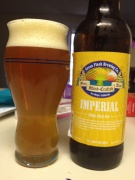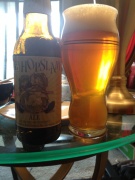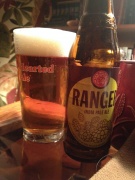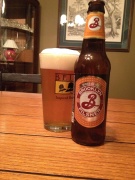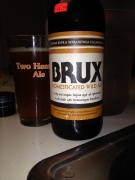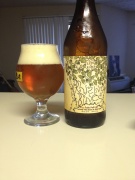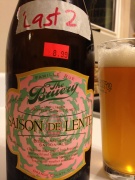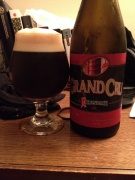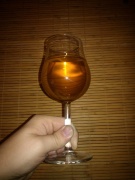Alcohol: Difference between revisions
GrimReaper (talk | contribs) No edit summary |
|||
| (8 intermediate revisions by 3 users not shown) | |||
| Line 1: | Line 1: | ||
[[File: | [[File:Alcohol1.jpg|250px|thumb|US-made Craft beer]] | ||
Alcohol is a CNS depressant that acts through the GABAa receptor, and is one of the most common strong psychoactives used by humans. It has a long history of use and its intoxicating effects are well-studied and documented. | Alcohol is a CNS depressant that acts through the GABAa receptor, and is one of the most common strong psychoactives used by humans. It has a long history of use and its intoxicating effects are well-studied and documented. | ||
| Line 6: | Line 6: | ||
They are split into three classes, beers, wines and spirits. These generally refer to the method of production and, and as such general assumptions can be made about the strength of them - because of this, some countries carry a lower drinking age for wines and beer than spirits (since they are generally much less alcoholic). | They are split into three classes, beers, wines and spirits. These generally refer to the method of production and, and as such general assumptions can be made about the strength of them - because of this, some countries carry a lower drinking age for wines and beer than spirits (since they are generally much less alcoholic). | ||
= History = | == History == | ||
The history of alcohol stretches back thousands of years. As the the prototypical depressant, it was intentionally produced and consumed by humans as early as 10,000 B.C., as established by the discovery of beer jugs from the late Stone Age. Further evidence shows it continued to be used throughout ancient societies around the world. | The history of alcohol stretches back thousands of years. As the the prototypical depressant, it was intentionally produced and consumed by humans as early as 10,000 B.C., as established by the discovery of beer jugs from the late Stone Age. Further evidence shows it continued to be used throughout ancient societies around the world. | ||
| Line 18: | Line 18: | ||
Today, alcohol is the most widely used recreational drug worldwide; advertised by large companies which produce and sell alcohol on a mass scale. | Today, alcohol is the most widely used recreational drug worldwide; advertised by large companies which produce and sell alcohol on a mass scale. | ||
= Duration = | == Consumption == | ||
Despite being one of the most commonly abused drugs, and is often ranked as causing much more harm than other recreational drugs, it is largely legal for recreational use in most parts of the world. | |||
Governments generally tax alcohol sold in their jurisdiction, which provides a source of income for the government and is said to work towards discouraging the over-use of alcohol. | |||
Some countries, such as Canada and certain states in the USA have a government-held monopoly on the sale of alcohol for consumption in the area. This comprises of alcohol only being sold in government-owned shops, and allows the government to easily place restrictions on the sale and consumption of alcohol e.g. minimum prices and limits to the number of drinks a person can purchase. | |||
Laws generally differ on one major factor, which is the legal drinking age (the age at which one is allowed to purchase or consume alcohol). Generally a 'legal drinking age' is given (ranging between 16 and 25), with some countries making a distinction between the age at which it is legal to purchase and the age at which it is legal to consume alcohol, and some do not stipulate a minimum age for consumption (making it technically legal). | |||
Certain countries, such as Germany, also have specific age rules depending on the type of beverage. This is because certain types of alcoholic beverage (e.g. beer) generally have a lower alcohol content than others (e.g. wine, spirits). | |||
A few countries and jurisdictions within countries, including many Muslim countries (Saudi Arabia, Iran) and certain districts in India, have an outright ban on the production, sale and consumption of alcoholic beverages. | |||
Many local jurisdictions around the world ban public drinking under penalty of fine, though this usually comes under a local law or by-law. | |||
== Production == | |||
In most countries in which alcohol is legal, commercial production of alcohol required government licensing and taxation. For personal use, production is often allowed, with certain limitations placed on the type of alcohol (e.g. beer and wines only) or the amount permitted to be produced. Some countries require taxation and some require a licence to be issued in a similar manner to commercial production. | |||
== Driving == | |||
Most countries also have specific laws against driving under the influence of alcohol, generally stipulating a percentage for blood alcohol content which is considered permittable while driving. This stems from the well-researched fact that being under the influence of alcohol (as a [[depressants|depressant]]) heavily reduces alertness and ability to drive, and this leads to a much greater risk of an accident on the road either harming the individual or others. | |||
The permittable drinking limit ranges rather heavily depending on the country, ranging between 0.00% for probationary drivers in Western Australia and 0.8% in many countries such as Canada, the UK and Ethiopia. Punishments for a violation also vary, with some countries implementing different levels of punishment depending on the blood alcohol content - however, most punishments are rather severe due to the dangerous nature of the crime and may include withdrawal of driving licence, large fines or prison time (especially with a repeat offence). | |||
== Duration == | |||
{| class="wikitable" | {| class="wikitable" | ||
| Line 38: | Line 64: | ||
|} | |} | ||
= Effects = | == Effects == | ||
== Positive == | === Positive === | ||
*Relaxation | *Relaxation | ||
*Mood lift, happiness, giddiness | *Mood lift, happiness, giddiness | ||
| Line 47: | Line 73: | ||
*Analgesia (kills pain) | *Analgesia (kills pain) | ||
== Neutral == | === Neutral === | ||
*Slurred speech | *Slurred speech | ||
*Flushed skin | *Flushed skin | ||
| Line 58: | Line 84: | ||
*Mild visual distortions at high doses | *Mild visual distortions at high doses | ||
== Negative == | === Negative === | ||
Negative side effects increase with higher doses | Negative side effects increase with higher doses | ||
*Decreased coordination | *Decreased coordination | ||
*Nausea, vomiting (vomiting while unconscious can be fatal) | *Nausea, vomiting (vomiting while unconscious can be fatal) | ||
*Dehydration | |||
*Reduced impulse control | *Reduced impulse control | ||
*Emotional volatility (anger, violence, sadness, etc) | *Emotional volatility (anger, violence, sadness, etc) | ||
| Line 72: | Line 99: | ||
*Brain and liver damage (cirrhosis) with heavy use | *Brain and liver damage (cirrhosis) with heavy use | ||
*Lowered inhibitions and increased confusion can lead to unwanted and *negative sexual encounters (date rape) | *Lowered inhibitions and increased confusion can lead to unwanted and *negative sexual encounters (date rape) | ||
*Hangover, lasting | *Hangover, lasting 1-36 hours, from mild to severe after heavy use | ||
*Fetal damage in pregnant women at high dose or frequency | *Fetal damage in pregnant women at high dose or frequency | ||
= Chemistry and Pharmacology = | == Chemistry and Pharmacology == | ||
Refer to [http://www.erowid.org/chemicals/alcohol/alcohol_pharmacology1.shtml The Neuropharmacology of Ethyl Alcohol] on Erowid. | Refer to [http://www.erowid.org/chemicals/alcohol/alcohol_pharmacology1.shtml The Neuropharmacology of Ethyl Alcohol] on Erowid. | ||
= Harm Reduction = | == Harm Reduction == | ||
* Avoid driving and operating heavy machinery. | * Avoid driving and operating heavy machinery. | ||
| Line 84: | Line 111: | ||
* Do not drink everyday. Do not binge drink (more than 5 drinks in 2 hours). This can lead to a psychical dependence on alcohol and also lead to liver problems. | * Do not drink everyday. Do not binge drink (more than 5 drinks in 2 hours). This can lead to a psychical dependence on alcohol and also lead to liver problems. | ||
* Be sure to keep hydrated while drinking, as alcohol dehydrates the body. | * Be sure to keep hydrated while drinking, as alcohol dehydrates the body. It is advisable to alternate between a glass of water and an alcoholic drink throughout the night. | ||
* Eating a substantial meal before drinking can help absorb the alcohol and will mildly reduce negative effects. | |||
* Mixing different types of alcoholic drinks can lead to increased negative effects, including dehydration and hangovers. | |||
= | === Interactions === | ||
Alcohol interacts negatively with many drugs, namely benzodiazepines, opioids, dissociatives, and many pharmaceuticals. Alcohol is a central nervous system (CNS) depressant, and should not be combined with other CNS depressants (Benzodiazepines, Opioids, some Dissociatives, etc), as this risks unsafe drops in heart rate, blood pressure, and respiration. When combined with dissociatives, this risk is present alongside the risk of heavily increased intoxication. Alcohol combined with dissociatives can often lead a user to become sick as if they consumed much more alcohol than they actually have (sometimes leading to vomiting and/or blacking out). Combining alcohol with benzodiazepines greatly increases the risk of the user blacking out. Alcohol also dehydrates the body, making it a bad drink of choice for those on MDMA. Please do not mix alcohol with any of these drugs, as you are risking your health and life. | |||
= Images = | |||
<gallery mode="packed-hover"> | |||
Image:Alcohol1.jpg | |||
Image:Alcohol2.jpg | |||
Image:Alcohol3.jpg | |||
Image:Alcohol4.jpg | |||
Image:Alcohol5.jpg | |||
Image:Alcohol6.jpg | |||
Image:Alcohol7.jpg | |||
Image:Alcohol8.jpg | |||
Image:Wino.jpg | |||
</gallery> | |||
== Legal status == | |||
Alcohol is legal for consumption and sale in most countries across the world. The exception to this includes the following countries, where alcohol is illegal:<ref>http://www.quitalcohol.com/information/in-which-countries-is-alcohol-illegal.html</ref> | |||
* Afghanistan | |||
* Bangladesh | |||
* Brunei | |||
* India (only in Gujarat, Manipur, Mizoram, Nagaland and Lakshadweep) | |||
* Iran | |||
* Kuwait | |||
* Libya | |||
* Pakistan (for Muslims only) | |||
* Saudi Arabia | |||
* Sudan | |||
* United Arab Emirates (only in Sharjah) | |||
* Yemen | |||
In countries where alcohol is legal, the minimum age to drink usually ranges from 16-21 years and older. Some examples of countries with a minimum drinking age include: | |||
* Belgium, Germany - 16 for beer and wine, 18 for spirits | |||
* United Kingdom, France, China, Mexico - 18 | |||
* Canada - 18/19 depending on province | |||
* United States of America - 21 | |||
* In Russia it is legal to drink alcohol at any age but illegal to sell alcohol to anyone under the age of 18 | |||
= Links = | |||
* [http://www.erowid.org/chemicals/alcohol/alcohol.shtml Erowid] | |||
* [http://www.cdc.gov/alcohol/faqs.htm#healthProb CDC FAQ] | |||
= Notes = | |||
<references /> | |||
[[Category:Depressant]] | [[Category:Depressant]] | ||
[[Category:Drugs]] | [[Category:Drugs]] | ||
Latest revision as of 03:56, 10 March 2015
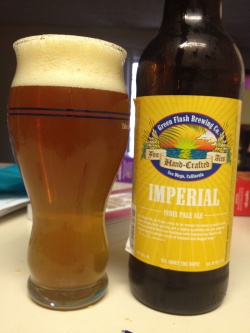
Alcohol is a CNS depressant that acts through the GABAa receptor, and is one of the most common strong psychoactives used by humans. It has a long history of use and its intoxicating effects are well-studied and documented.
Alcohol when consumed by humans usually refers to an alcohol beverage, which generally contains between 3% and 40% alcohol, though certain drinks used as alcoholic beverages (though sometimes not entirely intended as such) have concentrations of alcohol up to 80%.
They are split into three classes, beers, wines and spirits. These generally refer to the method of production and, and as such general assumptions can be made about the strength of them - because of this, some countries carry a lower drinking age for wines and beer than spirits (since they are generally much less alcoholic).
History
The history of alcohol stretches back thousands of years. As the the prototypical depressant, it was intentionally produced and consumed by humans as early as 10,000 B.C., as established by the discovery of beer jugs from the late Stone Age. Further evidence shows it continued to be used throughout ancient societies around the world.
The first records of distilled alcohol was from Greek society during the 1st century during research into medical and alchemical uses. Later, between the 12th and 14th centuries, distilled alcoholic beverages were distributed throughout Europe and were used widely.
In medieval Europe, the consumption of alcohol was used as a way of avoiding water-borne diseases such as cholera. This was because the process of boiling water and fermentation with yeast involved in the production of alcohol killed dangerous bacteria.
Alcohol became only used more widely as history progressed, its use sanctioned by church establishments. When America was established, a heavy drinking culture became established with it - communal binges occurring at public events during which participants would drink heavily until intoxicated.
Today, alcohol is the most widely used recreational drug worldwide; advertised by large companies which produce and sell alcohol on a mass scale.
Consumption
Despite being one of the most commonly abused drugs, and is often ranked as causing much more harm than other recreational drugs, it is largely legal for recreational use in most parts of the world.
Governments generally tax alcohol sold in their jurisdiction, which provides a source of income for the government and is said to work towards discouraging the over-use of alcohol.
Some countries, such as Canada and certain states in the USA have a government-held monopoly on the sale of alcohol for consumption in the area. This comprises of alcohol only being sold in government-owned shops, and allows the government to easily place restrictions on the sale and consumption of alcohol e.g. minimum prices and limits to the number of drinks a person can purchase.
Laws generally differ on one major factor, which is the legal drinking age (the age at which one is allowed to purchase or consume alcohol). Generally a 'legal drinking age' is given (ranging between 16 and 25), with some countries making a distinction between the age at which it is legal to purchase and the age at which it is legal to consume alcohol, and some do not stipulate a minimum age for consumption (making it technically legal).
Certain countries, such as Germany, also have specific age rules depending on the type of beverage. This is because certain types of alcoholic beverage (e.g. beer) generally have a lower alcohol content than others (e.g. wine, spirits).
A few countries and jurisdictions within countries, including many Muslim countries (Saudi Arabia, Iran) and certain districts in India, have an outright ban on the production, sale and consumption of alcoholic beverages.
Many local jurisdictions around the world ban public drinking under penalty of fine, though this usually comes under a local law or by-law.
Production
In most countries in which alcohol is legal, commercial production of alcohol required government licensing and taxation. For personal use, production is often allowed, with certain limitations placed on the type of alcohol (e.g. beer and wines only) or the amount permitted to be produced. Some countries require taxation and some require a licence to be issued in a similar manner to commercial production.
Driving
Most countries also have specific laws against driving under the influence of alcohol, generally stipulating a percentage for blood alcohol content which is considered permittable while driving. This stems from the well-researched fact that being under the influence of alcohol (as a depressant) heavily reduces alertness and ability to drive, and this leads to a much greater risk of an accident on the road either harming the individual or others.
The permittable drinking limit ranges rather heavily depending on the country, ranging between 0.00% for probationary drivers in Western Australia and 0.8% in many countries such as Canada, the UK and Ethiopia. Punishments for a violation also vary, with some countries implementing different levels of punishment depending on the blood alcohol content - however, most punishments are rather severe due to the dangerous nature of the crime and may include withdrawal of driving licence, large fines or prison time (especially with a repeat offence).
Duration
| Onset | 15-30 minutes |
| Coming-up | 15-20 minutes |
| Peak | 30-90 minutes |
| Coming-down | 45-60 minutes |
| Total duration | 1.5-3 hours |
| After-effects | 1-2 hours |
| Hangover | 1-36 hours |
Effects
Positive
- Relaxation
- Mood lift, happiness, giddiness
- Increased sociability
- Lowered inhibitions & reduced social anxiety
- Analgesia (kills pain)
Neutral
- Slurred speech
- Flushed skin
- Drowsiness, sleepiness
- Nystagmus, difficulty focusing eyes
- Changed (often increased) response to sexual stimuli
- Tolerance with repeated use within a few days
- Changed aesthetic appreciation: Normally beautiful things can seem *ugly, things normally seen as ugly judged beautiful
- "Beer goggles" — Others appear more attractive
- Mild visual distortions at high doses
Negative
Negative side effects increase with higher doses
- Decreased coordination
- Nausea, vomiting (vomiting while unconscious can be fatal)
- Dehydration
- Reduced impulse control
- Emotional volatility (anger, violence, sadness, etc)
- Reduced ability to attain/maintain erection in most males
- Increased difficulty in achieving orgasm in some females
- Frequent urination (more with beer or wine), diuretic effect
- Dizziness and confusion
- Blackouts and memory loss at high doses
- Coma and death at extreme doses
- Brain and liver damage (cirrhosis) with heavy use
- Lowered inhibitions and increased confusion can lead to unwanted and *negative sexual encounters (date rape)
- Hangover, lasting 1-36 hours, from mild to severe after heavy use
- Fetal damage in pregnant women at high dose or frequency
Chemistry and Pharmacology
Refer to The Neuropharmacology of Ethyl Alcohol on Erowid.
Harm Reduction
- Avoid driving and operating heavy machinery.
- Do not drink everyday. Do not binge drink (more than 5 drinks in 2 hours). This can lead to a psychical dependence on alcohol and also lead to liver problems.
- Be sure to keep hydrated while drinking, as alcohol dehydrates the body. It is advisable to alternate between a glass of water and an alcoholic drink throughout the night.
- Eating a substantial meal before drinking can help absorb the alcohol and will mildly reduce negative effects.
- Mixing different types of alcoholic drinks can lead to increased negative effects, including dehydration and hangovers.
Interactions
Alcohol interacts negatively with many drugs, namely benzodiazepines, opioids, dissociatives, and many pharmaceuticals. Alcohol is a central nervous system (CNS) depressant, and should not be combined with other CNS depressants (Benzodiazepines, Opioids, some Dissociatives, etc), as this risks unsafe drops in heart rate, blood pressure, and respiration. When combined with dissociatives, this risk is present alongside the risk of heavily increased intoxication. Alcohol combined with dissociatives can often lead a user to become sick as if they consumed much more alcohol than they actually have (sometimes leading to vomiting and/or blacking out). Combining alcohol with benzodiazepines greatly increases the risk of the user blacking out. Alcohol also dehydrates the body, making it a bad drink of choice for those on MDMA. Please do not mix alcohol with any of these drugs, as you are risking your health and life.
Images
Legal status
Alcohol is legal for consumption and sale in most countries across the world. The exception to this includes the following countries, where alcohol is illegal:[1]
- Afghanistan
- Bangladesh
- Brunei
- India (only in Gujarat, Manipur, Mizoram, Nagaland and Lakshadweep)
- Iran
- Kuwait
- Libya
- Pakistan (for Muslims only)
- Saudi Arabia
- Sudan
- United Arab Emirates (only in Sharjah)
- Yemen
In countries where alcohol is legal, the minimum age to drink usually ranges from 16-21 years and older. Some examples of countries with a minimum drinking age include:
- Belgium, Germany - 16 for beer and wine, 18 for spirits
- United Kingdom, France, China, Mexico - 18
- Canada - 18/19 depending on province
- United States of America - 21
- In Russia it is legal to drink alcohol at any age but illegal to sell alcohol to anyone under the age of 18
